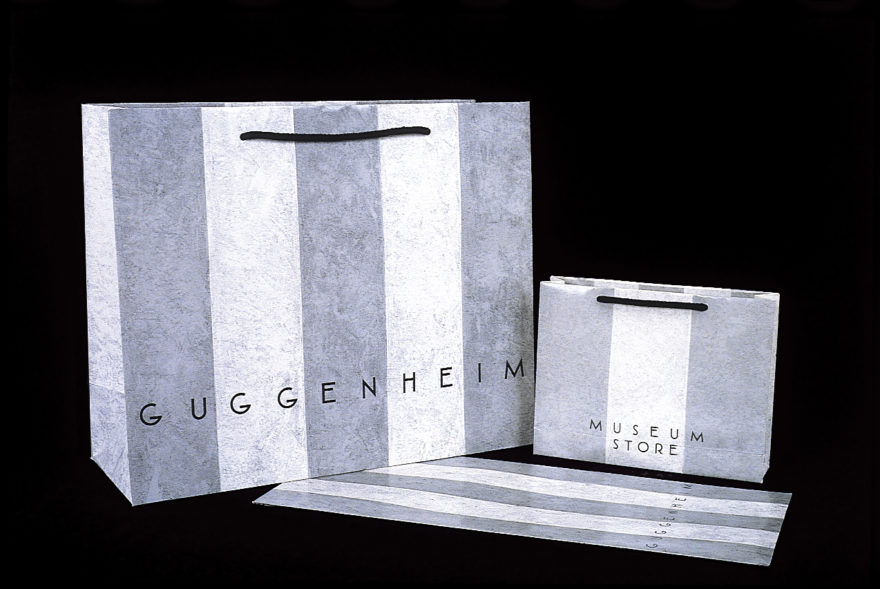In 1992, after a three-year expansion, the Solomon R. Guggenheim Museum began a new chapter of blockbuster exhibitions, global expansion, and broader curatorial scope. Concurrently, the museum’s retail division shared similar ambition, which, at the time, were previously unheard of in the art world.
Our packaging program for the museum store was influenced by two aspects of the expansion program. First was the exterior concrete surface of the museum’s new annex. Second was the collection of 350 Minimalist, Post-Minimalist, and Conceptual artworks which had been just acquired from Giuseppe Panza di Biumo — one of the most important collectors of postwar American art.
We drew from the codes of luxury boutiques, rather than museums of the time: turn-top shopping bags, rope handles, and oversized dimensions. This “viral” advertising was quite noticeable on New York City streets and helped position the Guggenheim as it grew into a truly global museum in multiple locations, with access to shared collections, common constituencies, and joint programming.

